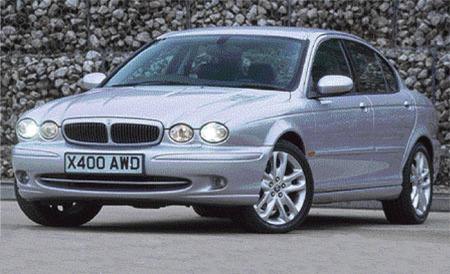The cynical among you will likely view the car on these pages as evidence that Ford has finally corrupted the Jaguar name-as you always feared it would. Yes, the Dearborn auto giant did oversee an artful rejuvenation of the stately XJ sedan. It did preside over the launching of the elegant XK8 and its sparkling new V-8 engine. And although Ford did pair the mechanical bits of the S-type sedan with the downmarket Lincoln LS, the parts were, at least, all-new and designed to a sophisticated standard.
But this X-type-it’s nothing more than a Ford Contour with a growling cat on its hood. If this isn’t quite trying to make a silk purse from a sow’s ear, it’s no better than starting with a nylon wallet.
Now that we’ve spent a couple days in the cockpits of several X-types, however, we are in a position to assure you that these suspicions of Ford treachery are unfounded. For starters, this X-type is based more on the second-generation European Ford Mondeo-which has debuted to rave reviews on the Continent-than the original Mondeo, which spawned America’s failed Contour. Moreover, Jaguar engineers greatly upgraded the chassis to bring it into line with Jaguar’s traditions and expectations of superiority.
The most important of these changes was abandoning the Mondeo’s front-wheel-drive layout. Jaguars have always had their power applied to the rear wheels, and the adoption of a four-wheel-drive system ensured that the X-type would not completely depart from this tradition. In fact, the driveline incorporates a mechanical center differential that routes 60 percent of the powertrain’s output to the rear axle unless slippery conditions provoke wheelspin. In that case, a viscous coupling fitted to the center diff diverts power to the axle with the greater grip.
Not only does this driveline save the X-type from the ignominy of being Jaguar’s first front-driver, but it also enhances steering feel. That’s because with only 40 percent of the power directed to the front tires, there are minimal torque-steer effects to corrupt the purity of the steering.
Because Jaguar engineers feel strongly that accurate and intuitive steering has always been one of the hallmarks of the cars from Coventry, they have pursued several other measures to achieve this goal. For one thing, the steering ratio in the ZF Servotronic II rack-and-pinion mechanism is slightly slower than it is in the Mondeo to produce a more linear response. However, new front knuckles produce a higher roll center, which increases weight transfer in corners to produce more directional change for each increment of steering.
Finally, Jaguar engineers have fitted roller bearings between the tops of the front strut towers and the body. These bearings, which we can’t recall seeing on any other car, reduce steering friction by eliminating the need for the strut body to turn relative to the strut rod when the front tires steer.
The rear suspension is a multilink design that differs considerably from the Mondeo’s to accommodate the power delivery to the rear wheels. Both front and rear suspensions are mounted on rubber-isolated subframes to minimize the transmission of vibration and noise to the body.
Propelling this upgraded chassis are two versions of the all-aluminum Jaguar AJ-V6 engine, both derived from the Ford Duratec family. The 3.0-liter V-6 is much like the engine used in the S-type, developing 231 horsepower at a lofty 6800 rpm, as well as 209 pound-feet of torque. There’s also a 2.5-liter version of this V-6 with 194 horsepower. Both V-6s employ drive-by-wire throttles to better integrate with the cruise control and the optional stability-control systems.
Either engine is available with a choice of a manual or automatic five-speed transmission-the latter equipped with Jaguar’s infernal J-gate shifter. Although this design has evolved into a Jaguar tradition, the J-gate falls well short of newer manumatic layouts as an aid to manual shifting.


Leave a Reply